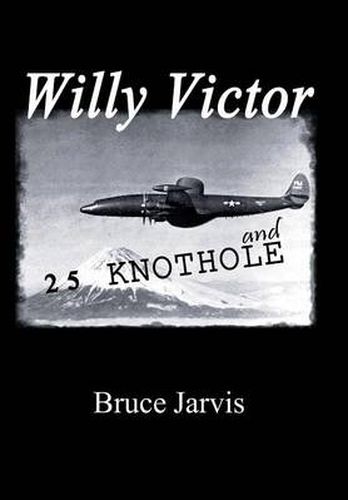Readings Newsletter
Become a Readings Member to make your shopping experience even easier.
Sign in or sign up for free!
You’re not far away from qualifying for FREE standard shipping within Australia
You’ve qualified for FREE standard shipping within Australia
The cart is loading…






This title is printed to order. This book may have been self-published. If so, we cannot guarantee the quality of the content. In the main most books will have gone through the editing process however some may not. We therefore suggest that you be aware of this before ordering this book. If in doubt check either the author or publisher’s details as we are unable to accept any returns unless they are faulty. Please contact us if you have any questions.
In the early hours of April 17, 1952 World War III nearly began. The Distant Early Warning line (DEW) was still an idea to be addressed by the U.S. government and its top military brass. Willy Victor and 25 knothole is about that vital cog of airborne defense against the real threat of a sneak attack (atomic and/ or airborne) against the American mainland. Bruce Jarvis, former naval flight crew member, recounts the operations of his Airborne Early Warning Squadron (AEWRON) experience, flying in a Lockheed Super Constellation Warning Star ( Navy designation Willy Victor-2) in support of the DEW line that became fully operable in the year 1957. It introduces readers to the flyers’ lives during the Cold War, and with little fanfare (but much moxie) recalls the unknown heroism of some of the front line troops in the form of a fictional but typical crew of naval airmen, of the now defunct conflict between Russia and the United States. Although the crew is fictional, their stories are true.
The entire U.S. air defense effort was conceptualized by what is known as the Lincoln Summer Study Group in 1952. It was in response to the panic in NORAD ( the North American Defense Command ) when bogeys or aircraft contrails were spotted near northern Canada-the U.S. had neither warning nor the means to combat its threat, if any. Had Kruschechev so chosen, the bogeys could have been the vanguard of a Russian first strike on the heart of America. The stories in Willy Victor and 25 knothole include purposes of the AEWRON missions, their importance, the people who flew them, personal anecdotes, their ground crews, their families and women and their sad or happy moments. It shows the human face of a war mostly fought in the rarefied scientific/technological and secret ops realms. Bruce Jarvis has taken good care in writing this book so that Americans may know and not forget the few good men who put their lives on the line during the cold war to protect the United States of America.
$9.00 standard shipping within Australia
FREE standard shipping within Australia for orders over $100.00
Express & International shipping calculated at checkout
This title is printed to order. This book may have been self-published. If so, we cannot guarantee the quality of the content. In the main most books will have gone through the editing process however some may not. We therefore suggest that you be aware of this before ordering this book. If in doubt check either the author or publisher’s details as we are unable to accept any returns unless they are faulty. Please contact us if you have any questions.
In the early hours of April 17, 1952 World War III nearly began. The Distant Early Warning line (DEW) was still an idea to be addressed by the U.S. government and its top military brass. Willy Victor and 25 knothole is about that vital cog of airborne defense against the real threat of a sneak attack (atomic and/ or airborne) against the American mainland. Bruce Jarvis, former naval flight crew member, recounts the operations of his Airborne Early Warning Squadron (AEWRON) experience, flying in a Lockheed Super Constellation Warning Star ( Navy designation Willy Victor-2) in support of the DEW line that became fully operable in the year 1957. It introduces readers to the flyers’ lives during the Cold War, and with little fanfare (but much moxie) recalls the unknown heroism of some of the front line troops in the form of a fictional but typical crew of naval airmen, of the now defunct conflict between Russia and the United States. Although the crew is fictional, their stories are true.
The entire U.S. air defense effort was conceptualized by what is known as the Lincoln Summer Study Group in 1952. It was in response to the panic in NORAD ( the North American Defense Command ) when bogeys or aircraft contrails were spotted near northern Canada-the U.S. had neither warning nor the means to combat its threat, if any. Had Kruschechev so chosen, the bogeys could have been the vanguard of a Russian first strike on the heart of America. The stories in Willy Victor and 25 knothole include purposes of the AEWRON missions, their importance, the people who flew them, personal anecdotes, their ground crews, their families and women and their sad or happy moments. It shows the human face of a war mostly fought in the rarefied scientific/technological and secret ops realms. Bruce Jarvis has taken good care in writing this book so that Americans may know and not forget the few good men who put their lives on the line during the cold war to protect the United States of America.